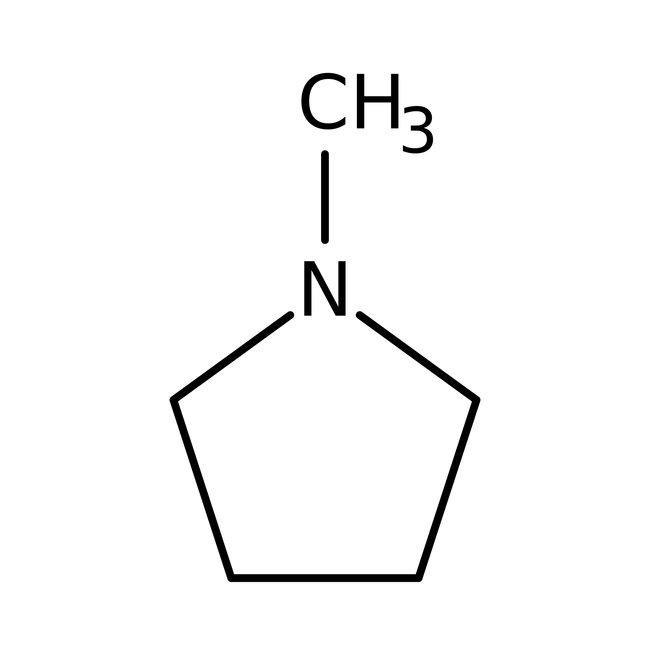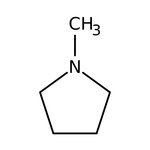Search Thermo Fisher Scientific
Thermo Scientific Chemicals
1-Methylpyrrolidine, 98%
CAS: 120-94-5 | C5H11N | 85.15 g/mol
Catalog number ALFB23799.36
Price (MYR)
1,101.00
EA
Quantity:
500 g
Price (MYR)
1,101.00
EA
Specifications
Chemical Name or Material1-Methylpyrrolidine
CAS120-94-5
Health Hazard 1H225-H301-H314-H332-H335
Health Hazard 2GHS H Statement
H225-H314-H318-H302-H332
Highly flammable liquid and vapour.
Causes severe skin burns and eye damage.
Causes serious eye damage.
Harmful if swallowed.
Harmful if inhaled.
H225-H314-H318-H302-H332
Highly flammable liquid and vapour.
Causes severe skin burns and eye damage.
Causes serious eye damage.
Harmful if swallowed.
Harmful if inhaled.
Health Hazard 3P210-P233-P235-P240-P241-P242-P243-P260-P264b-P270-P271-P280-P303+P361+P353-P304+P340-P305+P351+P338-P310-P330-P331-P363-P370+P378q-P501c
View more
1-Methylpyrrolidine is a methylated pyrollidine and is involved as an essential part of the structure of cefipime. It is also an active component of cigarette smoke.
This Thermo Scientific Chemicals brand product was originally part of the Alfa Aesar product portfolio. Some documentation and label information may refer to the legacy brand. The original Alfa Aesar product / item code or SKU reference has not changed as a part of the brand transition to Thermo Scientific Chemicals.
Applications
1-Methylpyrrolidine is a methylated pyrollidine and is involved as an essential part of the structure of cefipime. It is also an active component of cigarette smoke.
Solubility
Miscible with water.
Notes
Air sensitive. Incompatible with strong oxidizing agents and strong acids.
1-Methylpyrrolidine is a methylated pyrollidine and is involved as an essential part of the structure of cefipime. It is also an active component of cigarette smoke.
Solubility
Miscible with water.
Notes
Air sensitive. Incompatible with strong oxidizing agents and strong acids.
RUO – Research Use Only
General References:
- Pohlmann, S.; Olyschlager, T.; Goodrich, P.; Vicente, J. A.; Jacquemin, J.; Balducci, A. Azepanium-based ionic liquids as green electrolytes for high voltage supercapacitors. J. Power Sources 2015, 273, 931-936.
- Dabrowska, M.; Starek, M.; Krzek, J.; Papp, E.; Krol, P. A degradation study of cefepime hydrochloride in solutions under various stress conditions by TLC-densitometry. Biomed. Chromatogr. 2015, 29 (3), 388-395.



